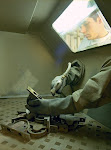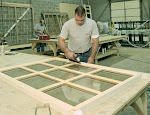Over the past two years, I have enjoyed watching my daughter
go through the process of selecting a college.
In addition to the typical criteria of the reputation of the school,
curriculum, teacher/student ratios, and chances of employment after graduation,
I was surprised to discover the extent to which the school’s facilities
influenced her decision. For example,
the top school in the country in her field of study got the ax because of the
lack of investment in classrooms and the cinder block 225-square-foot dormitory
rooms. Her final selection of the
Savannah College of Art and Design was largely based upon the overall energy of
the campus.
This made me think about the role that facilities play in
the academic experience and the associated opportunities for the construction
industry. The schools that will thrive
over the next 50 years will be the ones that have invested in the atmosphere of
the campus. This experience is greatly
defined by the architecture. The
investment in the restoration of traditional historic structures and the
development of new vibrant buildings is going to be a critical success factor
for both public and private educational institutions.
I submit that the post-high school educational sector is
currently at a turning point. Schools
are facing more challenges right now than ever before in history. Tuition rates have risen 1,120% since the
1970’s and over 50% of graduates are either jobless or underemployed. For
the first time I can remember, people are seriously debating about whether a
college education is worth the investment.
Add to this depressing statistic that fact that enrollment in higher education has declined
over the past ten years and will remain stagnant through 2024. These
serious collegiate challenges have inspired a new documentary on America’s
struggling colleges titled, “Ivory Tower ,”
that was recently released.
Some might think that the best strategy under these
threatening times would be to hunker down, cut faculty, and eliminate programs
to survive the financial strains. Many
schools have resorted to these strategies just to stop the bleeding. Although this strategy might provide
temporary relief for the bottom line, it won’t be successful in staving off
other educational competition. The
specter of online educational programs is growing by leaps and bounds. In a study from the American
Association of State Colleges and Universities, an estimated 14 percent of
students are enrolled in fully online programs, while 30 percent of all college
students take at least one online class.
If the bricks and mortar campuses don’t take a proactive approach to the
future, they might be joining the likes of Borders Bookstores and Blockbuster.
So how does all of this affect the construction
industry? I see a big opportunity for
schools, architects, and general contractors to join forces to enhance the physical
environment of higher education. This can be done by restoring and re-purposing
the traditional structures on campus that carry the heritage of the
institution. Landmark buildings are in
need of restoration, and more modern interior amenities should be incorporated
in the design. Enhancements can also be
accomplished by sensitive development of new facilities that complement or even
redefine the essence of the particular community. Although it has suffered from leaks, the Stata Center on
the MIT campus serves as a good example of innovative academic design.
Re-View is very active in the restoration of landmark
buildings on college campuses. We are
currently working on projects at the College of William and Mary and HarvardUniversity. We are manufacturing
historically correct wood window replicas that exactly match the existing
window systems except for the inclusion of insulated glass for energy
efficiency. These changes enable the
colleges to achieve LEED designation while they respect the historic design of
the buildings. The work on the exterior
of these buildings must be done very meticulously in order to restore the
traditional look of the buildings. On
the interior, the building systems and layouts are being redefined to provide a
more comfortable lifestyle for the college dormitory experience.
The next decade will be challenging for colleges and
universities across the country. The
winners are going to be the ones that make investments in their facilities. It should prove to be an exciting time for
the construction industry. As my second
daughter starts through the college selection process this next year, I’ll be watching
to see if I detect changes being made on the campuses we visit. I’m sure the
environment on the campus will play as large a part in the selection process as
it did for her sister. I only hope she chooses a college that also has a strong
curriculum to match..





